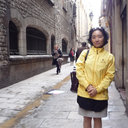The Purple leaf (Pl) locus of rice: the Pl(w) allele has a complex organization and includes two genes encoding basic helix-loop-helix proteins involved in anthocyanin biosynthesis.
Nøgleord
Abstrakt
The Purple leaf (Pl) locus of rice (Oryza sativa L.) affects regulation of anthocyanin biosynthesis in various plant tissues. The tissue-specific patterns of anthocyanin pigmentation, together with the syntenic relationship, indicate that the rice Pl locus may play a role in the anthocyanin pathway similar to the maize R/B loci. We isolated two cDNAs showing significant identity to the basic helix-loop-helix (bHLH) proteins found in the maize R gene family. OSB1 appeared to be allelic to the previously isolated R homologue, Ra1, but showed a striking difference at the C-terminus because of a 2-bp deletion. Characterization of the corresponding genomic region revealed that the sequence identical to a 5'-portion of OSB2 existed approximately 10-kb downstream of the OSB1 coding region. OSB2 lacks a conserved C-terminal domain. Restriction fragment length polymorphism analyses using an F(2) population indicate that both genes co-segregate with the purple leaf phenotype. A transient complementation assay showed that the anthocyanin pathway is inducible by OSB1 or OSB2. These results suggest that the Pl(w) allele may be complex and composed of at least two genes encoding bHLH proteins.


